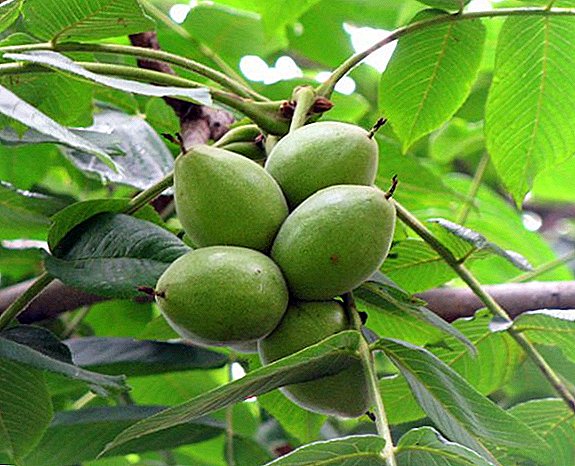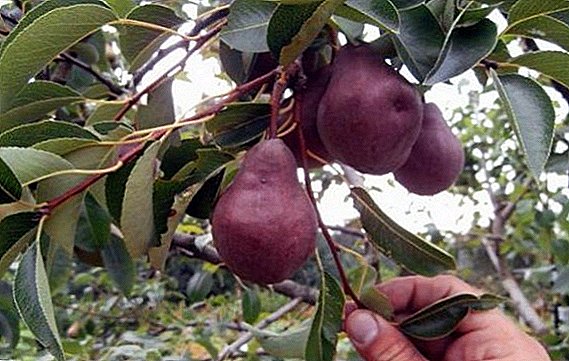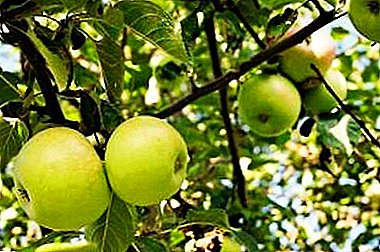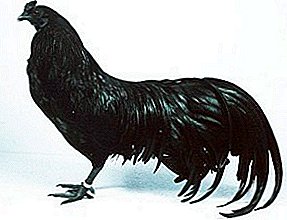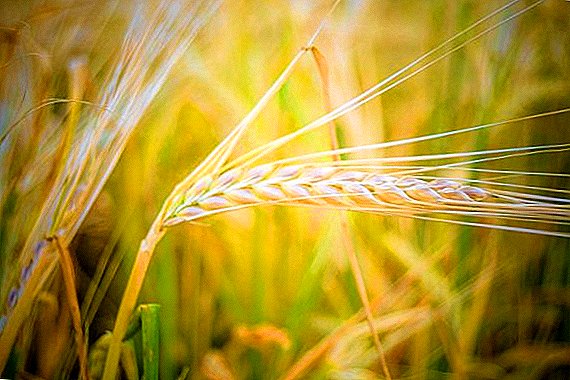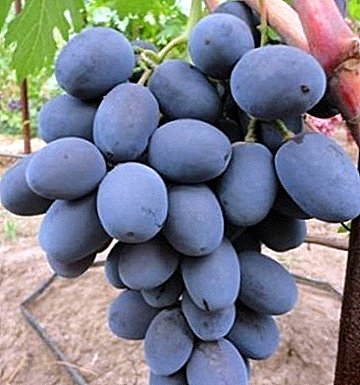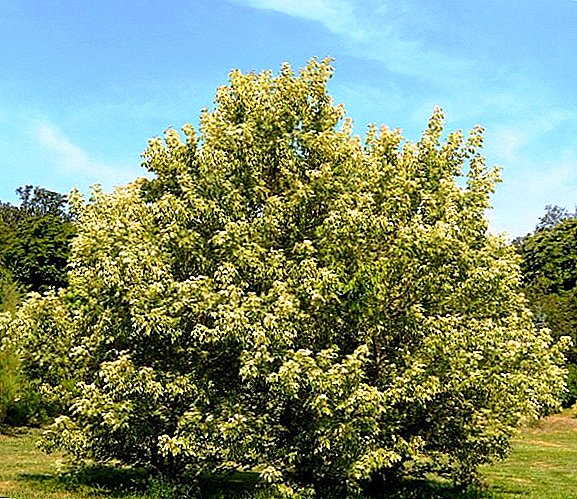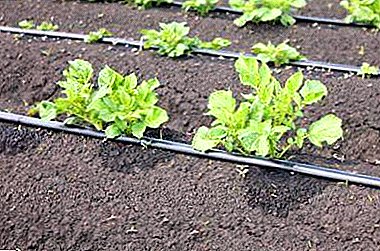
Many novice gardeners are wondering about the need for watering potatoes. Some even believe that he does not need watering.
In fact, potatoes are a moisture-loving crop that requires a lot of water and nutrients to grow tops and large tubers over the summer.
As a result of improper irrigation of crops - low yields, persistent diseases, chopping of tubers. Therefore, ignore watering should not be. Information on how to properly and when to irrigate potatoes, how to do dry irrigation, on what grounds it can be determined that moisture is too much, or not enough - you will find in our article.
When and how much to water the potatoes in the open field?
The need for watering potatoes varies depending on the phase of plant development..
There is no reason for watering potatoes before germination. If not spoiled tubers were used for planting, and the planting itself was carried out immediately after plowing the field, then the plant will have enough moisture in the spring soil and inside the tuber.
The danger of watering during this period lies in the fact that at this stage the plant has a root system, which in search of moisture forks and deepens into the soil. If you water the plant during this period, the roots will not be located deep, which will lead to a decrease in yield.
The first watering is recommended to produce when the first shoots appeared. For one bush, the rate of moisture is about 2-3 liters. Allowed to irrigate with a hose or at the root
IMPORTANT! Watering the plant is not recommended during the day from 12:00 to 18:00. This does not lead to the desired result, since moisture evaporates in the hot soil without reaching the roots, and droplets trapped on the tops can cause leaf burns.
Since the future harvest is laid from the moment the buds appear until the growth of the foliage stops, it is during this period that the plant needs proper watering. When single stalks appear - this is the time when the crop depends on watering the plant.. Abundant watering (about 4 liters of water per plant) during this period will increase the yield by 15-30%.
In dry, sunny weather, watering should be done every 4-6 days. If the weather is not too hot, then irrigation should be reduced to once every 10-14 days. If you see that tops dry and fade - this is a reason to spend additional soil moisture.
Heavy and dense soils that contain clay rock tend to retain moisture well. If there are puddles on the potato field after the rain, watering the potatoes is not needed. It should be carried out only during the drought.
A few weeks before the harvest, it does not make sense to water it, it does not affect the development of tubers, but it can lead to problems with the storage of potatoes.
Features for early varieties
 Early ripening potato varieties are characterized by rapid development and require poor, but frequent watering. It is recommended to make 3 liters of water per plant every 3-5 days. During the period of active flowering dose of water should be increased to 6 liters.
Early ripening potato varieties are characterized by rapid development and require poor, but frequent watering. It is recommended to make 3 liters of water per plant every 3-5 days. During the period of active flowering dose of water should be increased to 6 liters.
Proper watering - all the details:
- Water only early in the morning or in the evening.
- If watering is carried out through a hose - do not direct a strong stream of water to the tops of the plant.
- Do not water a few weeks before harvesting potatoes.
- Consider the characteristics of the soil on your site and the climate of your region. Light soils must be watered more often, heavy - less. In the southern, arid regions, the soil needs more water than in the northern and rainy ones.
- It is advisable not to use ice water, but rather to let it settle in a container in the sun.
How to get a rich harvest of early potatoes, read in our material.
What is a drip method?
Drip irrigation is a relatively simple and quite budgetary way of delivering water directly to the roots of a plant, the main advantage of which is the absence of the need to carry water in buckets or watering cans.
This is especially important, of course, for potatoes, since this is the main crop grown for most summer residents.
Benefits of drip irrigation:
- The roots of the plant with this method of irrigation develop the most well.
- Water does not get on the tops of potatoes, which allows to protect plants from many diseases and not to wash insecticides off the leaves.
- High moisture savings are achieved.
- Due to the fact that the water in the barrel has time to heat up, the roots of the plant are not injured as from irrigation with cold water.
Installing drip irrigation for potato irrigation is quite simple.. For this you need:
- barrel or other capacity of 150-200 liters;
- materials for building elevation;
- rigid hose or iron pipe with a diameter of 25 mm;
- flexible hose with a diameter of 28 mm;
- rubber compressor;
- valve with valve;
- stub.
- At the bottom of the barrel, drill a hole equal to the diameter of the crane. Before installing the valve, use rubber seals to prevent water loss.
- Place the barrel on a dais, making supports for it. This is necessary to create the necessary pressure and to provide water to the farthest landings.
- In the plastic pipe, make holes with a diameter of 2-3 mm, at a distance of about 20 cm from each other.
- Connect a flexible hose to the valve and the pipe (rigid hose). Plug the other end of the pipe with a plug.
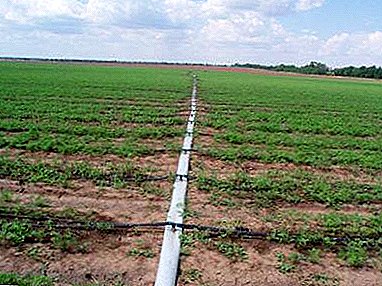 How to sprinkle potatoes in this way? The tactics of drip irrigation of potatoes are as follows: a plastic pipe should be put in the inter-row of potato bushes; through a flexible hose, water flows from a barrel of water to the roots of the plant through holes in the pipe. Having finished watering one row of potatoes, you need to close the water and move the pipe to another row.
How to sprinkle potatoes in this way? The tactics of drip irrigation of potatoes are as follows: a plastic pipe should be put in the inter-row of potato bushes; through a flexible hose, water flows from a barrel of water to the roots of the plant through holes in the pipe. Having finished watering one row of potatoes, you need to close the water and move the pipe to another row.- If you want a more convenient irrigation system, which does not imply the transfer of a pipe, but a more automated one, then connect a crane and a rigid pipe with a flexible hose.
- Install this pipe perpendicular between the rows.
- Drill to make holes on it for the installation of fittings (special adapters).
- Connect the narrow hoses through the fittings and pull them between the rows of potatoes.
- Install plugs at the ends of the hoses and main pipe. Keep in mind that watering capacity may not be enough for long-term planting. You may have to install another construction in the other side of the field.
- Water pressure can be adjusted by raising the height of the barrel.
- Experienced gardeners recommend taking care of installing the filter in the drip irrigation system. Not necessarily expensive, the main thing is to help avoid blockages in the system.
Signs of wrong actions
Signs of lack of moisture:
- Leaves look drooping and light.
- Small stalks begin to die off.
- Plant growth stops, buds can not dissolve.
Signs of moisture overload:
- Leaves droop, darken and become watery.
- In the lower part of the stem, moist spots are formed, sometimes with a gray or white patina.
- Why and how to fertilize potatoes?
- How to grow a vegetable from seed?
- How to spud potatoes?
- How to make a business plan for the production of root vegetables on an industrial scale?
- What is mulching and why is it needed?
- Where did you first start growing potatoes?
- How to grow potatoes? New technologies for large root crops.
- What are non-traditional ways of planting potatoes in the garden?
- Where and how are potatoes grown in Russia?
There are no clear instructions when and how much to water the potatoes, it all depends on a number of factors: the climatic conditions of a particular region, the composition and density of the soil, rainy or arid summer. One thing is for sure - if you carefully monitor the needs of your plants and follow simple instructions, in the fall you will enjoy an unprecedented harvest.


 How to sprinkle potatoes in this way? The tactics of drip irrigation of potatoes are as follows: a plastic pipe should be put in the inter-row of potato bushes; through a flexible hose, water flows from a barrel of water to the roots of the plant through holes in the pipe. Having finished watering one row of potatoes, you need to close the water and move the pipe to another row.
How to sprinkle potatoes in this way? The tactics of drip irrigation of potatoes are as follows: a plastic pipe should be put in the inter-row of potato bushes; through a flexible hose, water flows from a barrel of water to the roots of the plant through holes in the pipe. Having finished watering one row of potatoes, you need to close the water and move the pipe to another row.